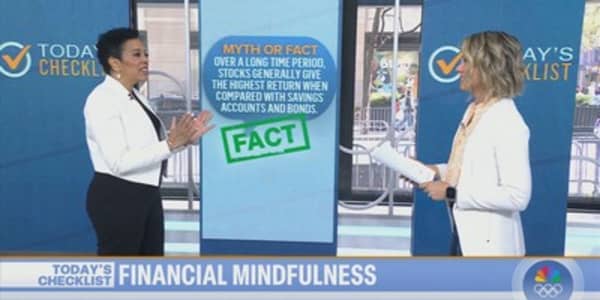When it comes to choosing a graduate school, nearly 9 in 10 students place a priority on quality and convenience rather than cost.
Those were the findings from a recent report by student loan provider Sallie Mae. The company performed an online poll of 1,597 graduate students from May to July.
Eighty-six percent selected their school based on quality and convenience, assigning top value to a school's prestige, its academic program and flexible coursework.
Only 12 percent picked their school based on the financial aid package and the annual cost of attendance.
"There are people who are very interested in focusing on a top program: that the school has a good reputation and specializes in your area of study," said Marie O'Malley, senior director of consumer research at Sallie Mae.
"On the other hand, there are older students who are part time and have established their lives," she said. "Many of them are choosing a school that is close to home. They're still working and focused on the convenience and location."
The typical graduate student spent $24,812 on their education in the 2016-17 school year, Sallie Mae found. More than half of that amount — $13,151 — came from borrowing.
In red ink
More than three-quarters of graduate students financed their way through school.
Almost a quarter tapped graduate PLUS loans — fixed rate federal loans for the post-baccalaureate set.
Students pursuing advanced degrees can take out larger federal loans than those who are working on a bachelor's: They can borrow up to $20,500 each year, whereas dependent first-year college students are capped at $5,500.
Financing costs are also higher for grad students.
Students pursuing graduate or professional degrees during the 2017-18 school year are paying 6 percent for federal direct loans and 7 percent on PLUS loans. The rate on federal loans for undergraduates is 4.45 percent.
Avoid the debt trap
Graduate students expect to rake in more money for the additional time they put into their studies: Nearly 6 in 10 expect salary increases of at least $20,000 after graduation.
They also should also be cognizant of hiccups that can prevent them from repaying their loans in a timely fashion. Here's what to consider if graduate school is in your future.
Understand forgiveness: About half of students with federal loans expect they'll have their debt forgiven in exchange for working in a public service job. This is tricky: Borrowers have to meet a slate of requirements in order to be relieved of their debt after 10 years of payments.
Get that "free money": Use grants and scholarships to cover any expenses you can't address with savings and income. Also, if you're attending part time, know that employer education assistance programs are still available under the new tax law. Under IRS rules, your workplace can offer you up to $5,250 in education aid free of taxes.
Snag federal aid first, then go private: Apply for federal aid by filling out your FAFSA. If you're short on covering your expenses, consider federal student loans before turning to private student loans.
Federal loans offer income-driven repayment plans and fixed interest rates, while private loans may have variable rates and fewer options if you have a hard time repaying your debt.
More from Your Money, Your Future
Student loan forgiveness isn't often a forgiving process
Five key differences between Roth and traditional IRAs
The best and worst states to retire
Save now, pay later: Why you may owe taxes in 2019






